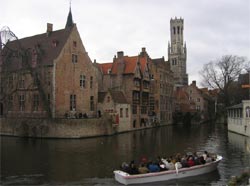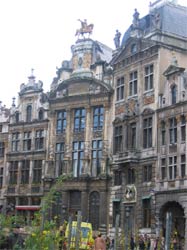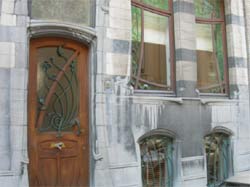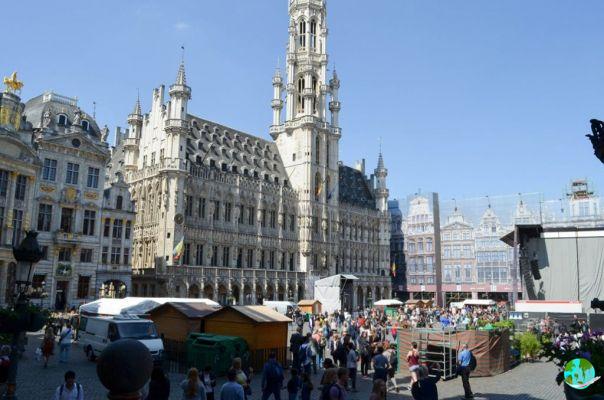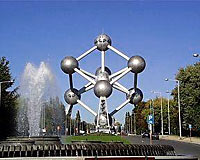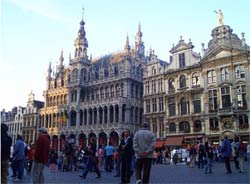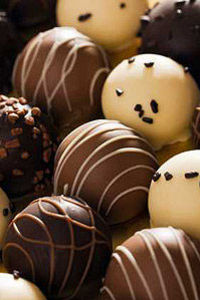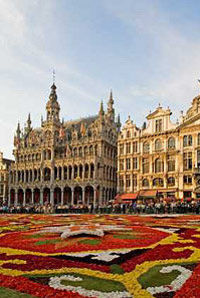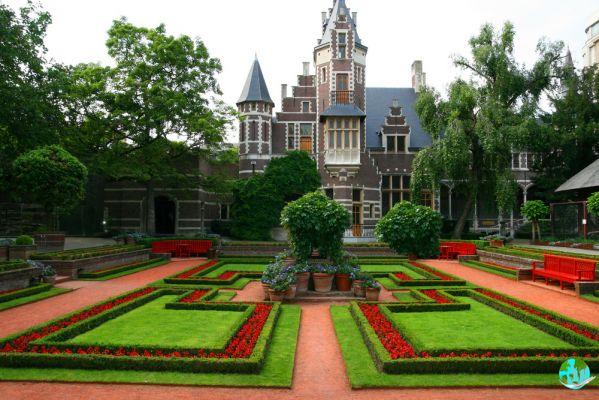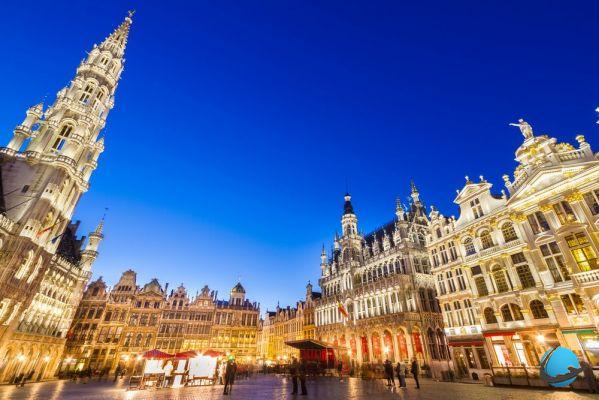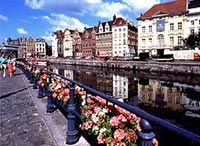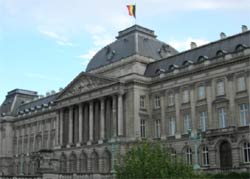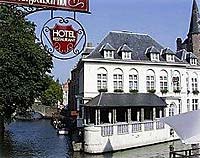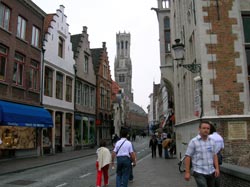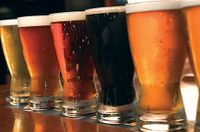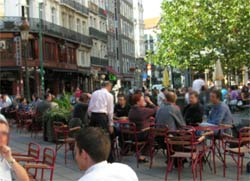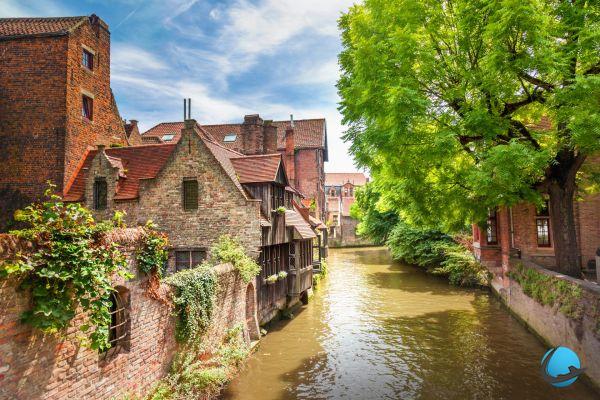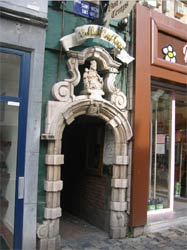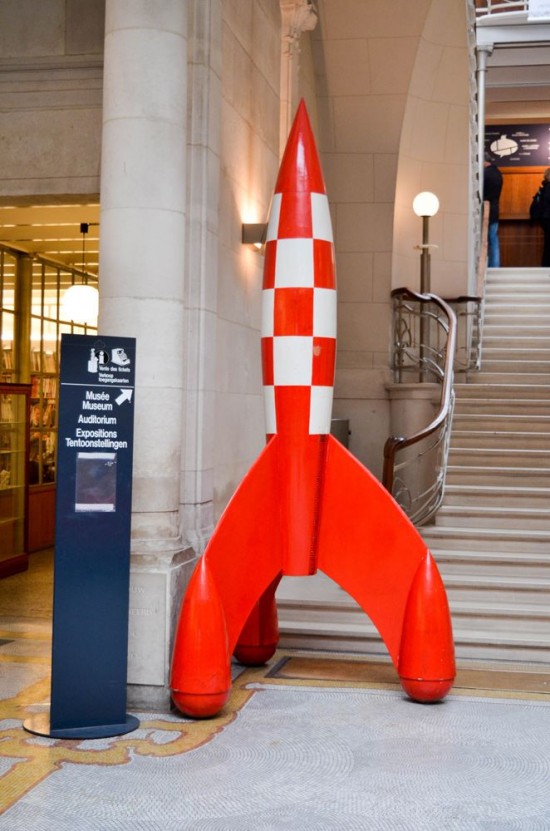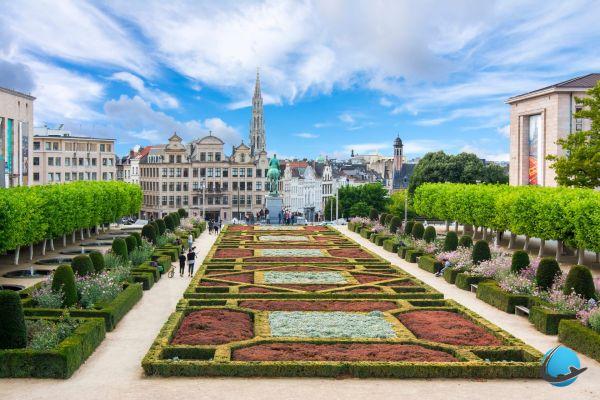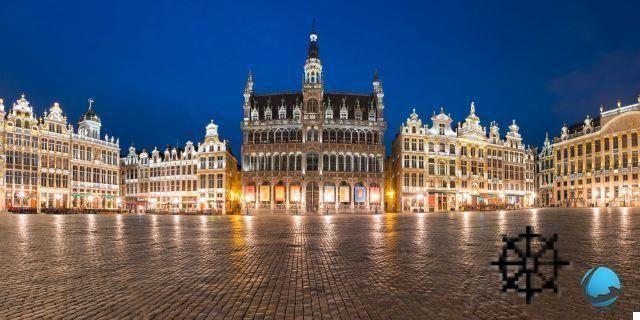
Everyone knows Brussels. According to the information, it is the capital of Europe. In the books, it is the city of Tintin. In the songs, it is the city of Brel. Everyone listens, reads, sings Brussels ... We take you to discover this wonderful city. When is the best time to go, what budget to plan on site, we explain all this in our guide! You will then be ready to visit Brussels.
Why visit Brussels?
Brussels always surprises visitors with the diversity of its faces. Head towards Île Saint-Géry, located between the two arms of the Senne, the river that crosses Brussels. Saint-Géry is a medieval district whose architecture has evolved a lot. Thus, the Halles of neo-Renaissance style currently serve as an exhibition center for Brussels heritage. To appreciate the flamboyant Gothic architecture characteristic of the city, go to the Grand Place in Brussels, one of the most beautiful in Europe.
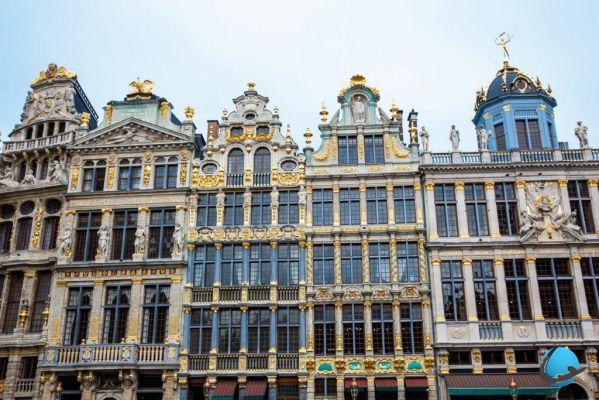 Guild houses on the Grand-Place
Guild houses on the Grand-Place
Brussels is also the capital of Art Nouveau, a real open-air gallery. Whether it is the Maison d'Ixelles or the Horta museum, it is impossible to remain indifferent to this expression of artists who are totally freed from academic constraints. Finally, in the Brussels Park, you will quickly forget that you are in the heart of a capital! Surrounded by trees and greenery, you will appreciate the ambient serenity.
Brussels: from the Kingdom to Europe
Brussels also presents many political facets expressed by several monuments of the city, in particular on the Place Royale. Thereby, the Royal Palace evokes the great period of the Kings of Belgium from the time of the Habsburgs.
During the revolution of 1830, Belgium became more democratic and became a parliamentary monarchy. The Parliament, which faces the Palais-Royal, also bears witness to this major institutional shift. Impossible to ignore it, Brussels is the seat of most of the major European institutions. Grouped in the same district, you will not fail to stroll there and become aware of a European community still abstract for millions of Europeans.
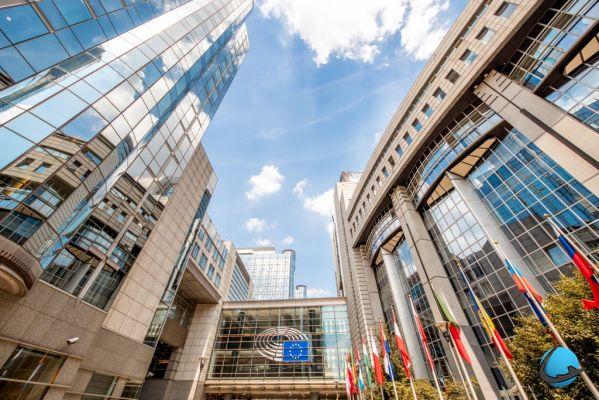 The European Parliament
The European Parliament
When is the best time to visit Brussels?
The oceanic climate enjoyed by the Belgian capital allows it to soften the weather which is often humid and not very sunny. The winter months can be particularly cold and snow is often seen falling in abundance. Despite these rather negative climatic aspects, visiting Brussels in winter is still pleasant because the warmth of the inhabitants and the cultural dynamism of the city more than compensate for its often gloomy celestial moods. For example, you can skate on the Grand-Place or taste delicious waffles in the Christmas markets. In autumn, comic book lovers will be delighted to participate in the dedicated festival which takes place every year..
Spring makes its appearance later in Brussels than in other Belgian cities. Frequent rains and still cool temperatures can sometimes impact the outings, but they also limit the influx of tourists. The Iris festival in May is particularly recommended for those who wish to discover the peculiarities of Brussels culture. For sun addicts, summer will obviously be the ideal season, especially since the temperatures are sometimes very high, and the internal parks of the city and the surrounding woods then offer all their beauty to bucolic walkers.
What budget should you plan for your stay?
The average cost of living in Brussels is generally a little higher than the rates usually practiced in France. In question, its statute of European capital and the tension applied consequently on the prices, in particular that of the lodging. While many youth hostels offer affordable rates, starting at 35 euros per night, mid-range hotels are often crowded and therefore comparatively more expensive than in Europe, rarely below 60 euros per night. The more we move upmarket, the more the prices fall. Thus, some 5-star hotels offer an overnight stay for only 130 euros.
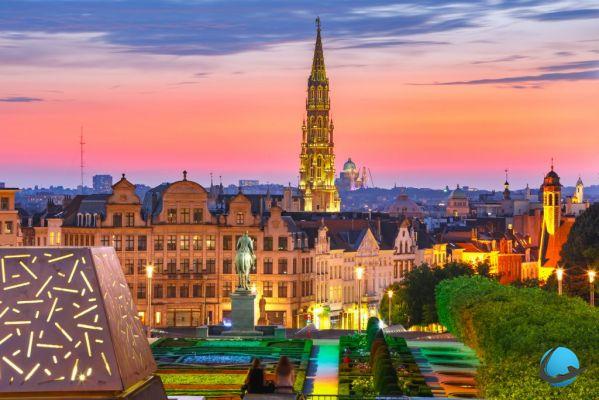 View over Brussels at dusk
View over Brussels at dusk
Food is also quite expensive on site. A lunch costs an average of 15 euros, while a three-course dinner is around 30 euros. But many chip shops and food-trucks offer the possibility of eating on the go at a lower cost. A cuisine that is certainly fat and rich, but so tasty that it is difficult to resist! Also note that the cost of food in supermarkets is quite high, on average 15% more expensive than in France. Only a few purchases like cigarettes or clothes will get you write off your trip when you consider visiting Brussels.
How do I get to Brussels?
To visit Brussels, you will not need your car because the urban transport network is very efficient there. We therefore advise you to leave it at home, especially since recent changes in legislation require a prior registration of your vehicle, which must show certain characteristics in terms of emissions to circulate in the city. If you absolutely want to come by road, therefore prefer carpooling, which takes advantage of a large number of routes offered between Paris and Brussels, or the bus. Several companies offer to transport you between the two capitals for a low cost and less than 4 hours of travel in comfortable conditions.
Brussels is at the heart of Europe and as such, it benefits from a strong attractiveness and international transport networks which are no less so. Coming to Brussels by train is particularly pleasant, especially since the capital has 5 stations, the two of which are the most popular, the Midi station and the Central station, which take you directly to the city center. The trips are multi-daily between Paris and Brussels and cost around 50 euros per person for a journey of only one hour on Thalys. The plane is also very economical thanks to the many low-cost companies that make the trip. You will then need to take a bus, train or taxi to reach the heart of the city in around 30 minutes.
How to get around on site?
To visit Brussels at your own pace, the best solution is still walking. The capital is medium in size which makes it suitable for walking. You can also borrow the Villo, self-service bicycle service, which make it possible to avoid the contingencies of road traffic in the city. The different formulas available allow you to adapt the rental to your needs. From 50 cents per half hour up to 8,20 euros for the weekly subscription, the Villo is freedom guaranteed! In general, avoid the car. In addition to the restrictions on access to the most polluting vehicles, parking spaces are scarce and expensive.
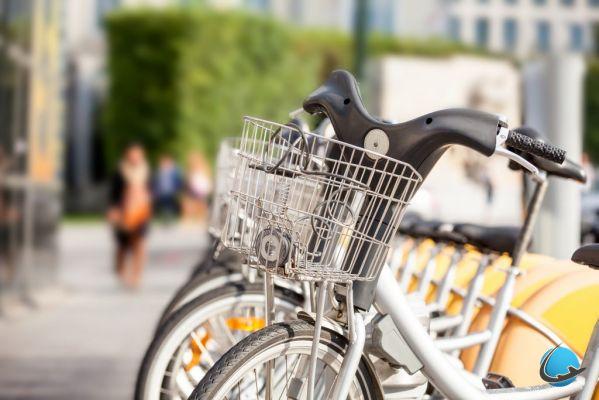 Villo
Villo
There are quite a few taxis in Brussels and the average price of the trip varies between 7 and 12 euros with a surcharge for night trips. So prefer buses, trams and subways. While they are also quite expensive, they allow you to explore the whole city rather quickly even if the tram suffers from heavy city traffic. Note that the controls are frequent and that you can buy your tickets directly from the driver but that it will then cost you a few cents more. So be sure to stock up at kiosks or metro stations and take Mobib cards that you can top up according to your needs.
What to eat and drink in Brussels?
Belgian gastronomy relies first on local vegetables. Chicon, called endive in France, is often accompanied there with ham and cheese and is therefore an excellent nourishing and tasty dish to fight against the horrors of winter. Stoemp is a dish that mixes several vegetables, traditionally grown in the surrounding countryside. Carrots, onions, leeks and especially potatoes, this dish holds well to the body, especially when accompanied by bacon or blood sausage. For meat, we recommend the Flemish Carbonade. Its pieces of meat simmered for a long time in a beer sauce are so sweet on the palate!
Obviously impossible to visit Brussels without tasting the local fries. Cooked in goose fat, they are always golden and crispy to perfection and the innumerable huts and food-trucks that dot the city always offer the possibility of filling the small hollow with a delicious cone. The most demanding will prefer to taste them with mussels at the restaurant, while lovers of fatty and somewhat regressive food can taste the Fricadelle, the Bicky-burger or the Mitraillette Sandwich, offered in these tasteful stalls! Finally, one cannot leave the capital without having tested its sweets, sweet or bitter. Chocolates, waffles or beers, the choice is yours (or not) according to your tastes!
READ ALSO :
Brussels through its local specialties: what to eat, what to drink?
In which neighborhood to stay during your stay?
The center of Brussels is sometimes called the Pentagon or the Little Belt. Around the Grand Place, there are many points of tourist interest and the geographical location of the district makes it an ideal base for exploring the streets of the city. On the other hand, it will be necessary to take into account the crowds, the noise and rather high prices, particularly during the summer. Those who come visit Brussels to immerse yourself in its nightlife will rather choose the Saint-Géry district. Central and lively, the district is home to a large number of bars and restaurants and we appreciate its shaded terraces in summer, where multiple concerts of all influences are organized.
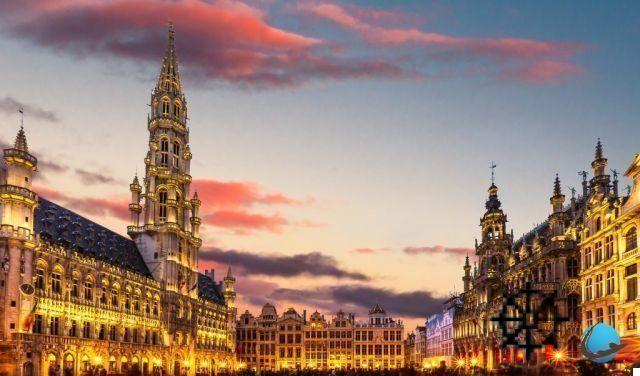 Grand Place
Grand Place
The Marolles district is a bit more out of the way and a lot more popular. Here, there are many different communities that bring the area to life to the rhythm of their own cultures. On the Place du Jeu de Balle, we find the Old Market and its abundant and daily activity. A real window on the life of the locals. Lovers of calm and old stones must imperatively establish their quarters in the Template. Traditional medieval architecture, Gothic churches but also chocolate shops make this place a little nest of calm and softness in a hyperactive city.
What are the main monuments and museums to visit?
Some sites in Brussels are so iconic that it is almost no longer necessary to present them. The famous Manneken-Pis for example, this fountain in the shape of a statue of a child who urinates, erected in 1619, attracts each year an incalculable number of visitors who come to admire the various outfits including the parent and the inhabitants. We also think of l’Atomium which represents the atomic structure on a large scale and was built on the occasion of the Universal Exhibition of 1958. But Brussels, it is also many religious monuments like the Basilica of the Sacred Heart, one of the largest churches Europe, the Saint-Michel-et-Gudule cathedral, favorite of the inhabitants of Brussels or even Notre-Dame-du-Sablon, undoubtedly the most beautiful Gothic church in Belgium.
There are also a large number of museums in the city. The Royal Museums of Fine Arts contain collections of more than 20 works, some dating from the beginning of the XNUMXth century. In the King's house on the Grand-Place, the City Museum is a must-see for anyone wishing to learn more about the rich and proud past of Brussels. Painting aficionados will necessarily go through the Magritte Museum which houses 250 of the most beautiful works of this contemporary genius. Finally, we particularly recommend the Comic Strip Museum, a veritable showcase for this new and sometimes minimized art in France, but which here enjoys all the prestige it deserves.
TO COMPLETE THESE TIPS, also read our article:
What to see and do in Brussels? 15 Must-see visits!
What are the most beautiful walks to do?
Brussels is a dynamic city, which always offers the visitor the opportunity to marvel at its culture and rich history. Walking around town is the surest way to blend in with local life and catch a glimpse of some of the country's art masterpieces. We think in particular comic strip frescoes installed on the walls of multiple districts of the city. The parks are as pleasant in summer for their freshness as in winter for their bucolic charm. The Parc du Cinquantenaire, commemorating independence with its three sumptuous arches, the Parc Léopold in the heart of the European district or even the Bois de la Cambre and its appearance of a protected forest, are all green settings to visit absolutely!
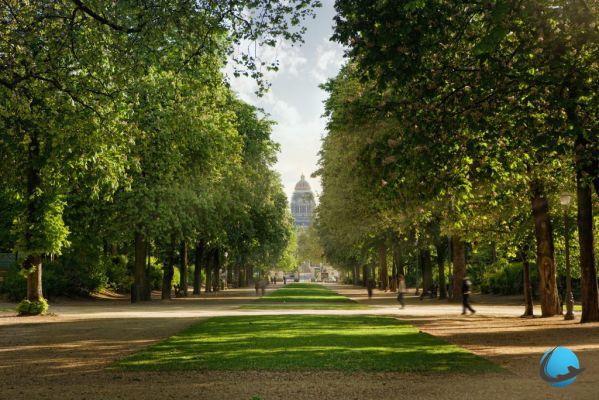 The Royal park
The Royal park
The walks can also be an opportunity to capture all the grandeur of Belgian history. The Grand Place is certainly one of the most impressive squares in Europe. Its imposing and golden facades have the effect of architectural mountains which overwhelm the visitor under their ceremonial majesty. Another important building, the Royal Palace opens its doors to tourists for six weeks a year. A must for those lucky enough to visit Brussels during this short period. Throne Room, Blue Room, Mirror Room or Goya Room, you will be amazed, we guarantee it!
What are the different Arts to discover in Brussels?
Like many European cities, Brussels has an important cultural heritage. This is evidenced by the many museums to visit, such as the Chocolate Factory. However, Brussels stands out for its specificity: it is indeed the undisputed capital of comics. Comics are omnipresent: The eighth art is displayed not only in bookstores, but also on the walls. Beautiful walks in perspective!
Art and antiques
All lovers of art and antiques meet in the Sablon and Marolles districts. The first has many modern art galleries: a delight for the eyes. Those who prefer flea markets can go to rue Haute and rue Blaes.
Belgian chocolate factory
Chocolate lovers, know that there are many artisan chocolate makers in Brussels. Some even offer tours. One of the rare artisanal chocolate factories located in the heart of Brussels which develops ideas to offer the best quality of Belgian chocolate. The Planète Chocolat chocolate factory also organizes workshop visits and workshops where you enter the workshop to make your own pralines.
Deco and design
Since the advent of Art Nouveau and its local figure Victor Horta, Brussels has maintained its status as the capital of design. Shops abound in particular in the Dansaert district.
Useful information
To help you prepare for your stay, we offer you our practical information:
- Formalities: Keep your valid ID with you in case of checks.
- Health : No special precautions to be taken, just be up to date with your vaccinations. You can also obtain a European health insurance card before your departure. This is valid for 2 years.
- Cash : the Euro.
Brussels is the ideal place for a city trip of a few days!
With all this information, you can easily spend a weekend in Brussels! Do you know any good plans in this capital? Tell us all in the comments!




